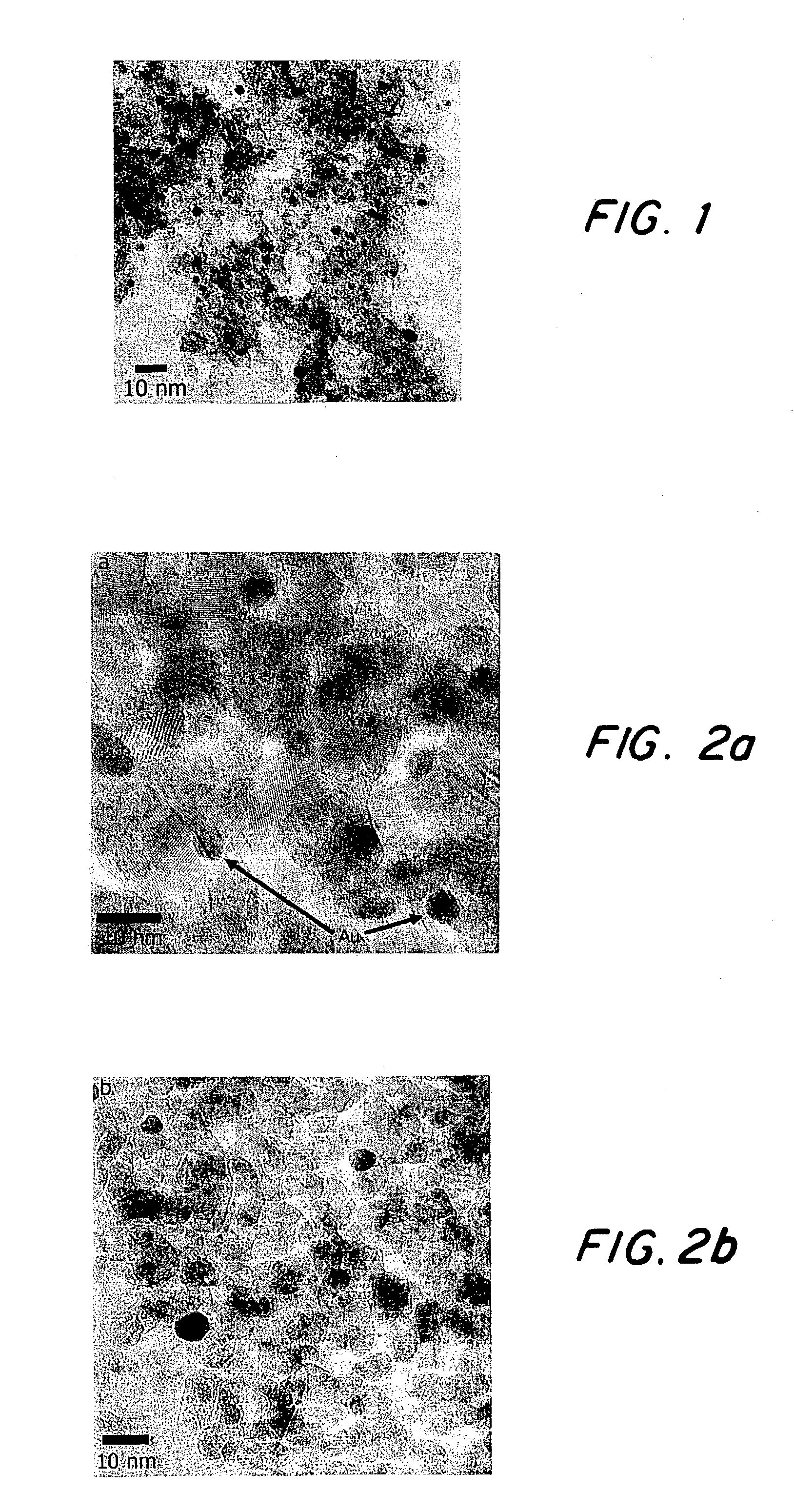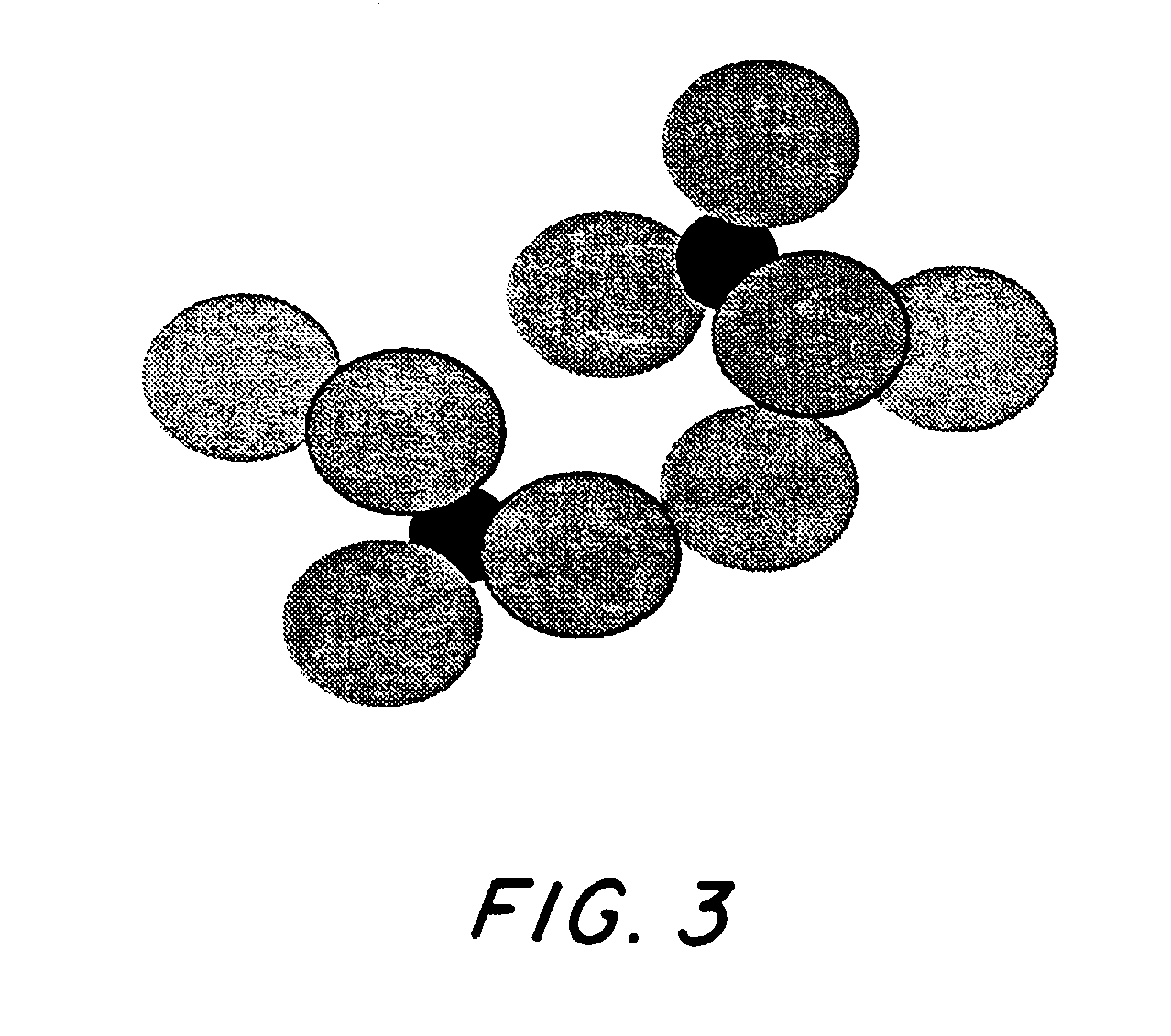Catalytic three dimensional aerogels having mesoporous nanoarchitecture
a three-dimensional aerogel and nano-architecture technology, applied in the field of catalysts, to achieve the effect of effectively catalyzing other oxidatives and extending the flexibility of the 3-d architectur
- Summary
- Abstract
- Description
- Claims
- Application Information
AI Technical Summary
Benefits of technology
Problems solved by technology
Method used
Image
Examples
Embodiment Construction
[0012]Au-MPCs are synthesized and modified by literature procedures described in Brust et al. above and in Murray et al., in Langmuir, 1998, 14, 17–30 and incorporated herein by reference. The size and purity of mixed-monolayer Au clusters are more controllable if one makes gold-decanethiolate (Au-DT) clusters first and subsequently performs ligand-exchange reactions to get the final desired monolayer compositions, Murray et al., J. Am. Chem. Soc. 1996, 118, 4212–4213 and Langmuir 1999, 56, 7–10; Murray et al., J. Am. Chem. Soc. 1997, 119, 9175–9178, the three references incorporated herein by reference. In place-exchange reactions, either mercaptoundecanoic acid (MUA; at 50% stoichiometric) or 11-mercaptoundecanol (MU; in 5-fold excess for nearly complete exchange) is added to a solution of Au-DT clusters in toluene and stirred for 5 days. After rotary evaporation of the toluene, Au-MUA: DT clusters are suspended in water and collected on a frit.
[0013]Monolayer-protected Au-titania...
PUM
| Property | Measurement | Unit |
|---|---|---|
| diameter | aaaaa | aaaaa |
| diameter | aaaaa | aaaaa |
| diameters | aaaaa | aaaaa |
Abstract
Description
Claims
Application Information
 Login to View More
Login to View More - R&D
- Intellectual Property
- Life Sciences
- Materials
- Tech Scout
- Unparalleled Data Quality
- Higher Quality Content
- 60% Fewer Hallucinations
Browse by: Latest US Patents, China's latest patents, Technical Efficacy Thesaurus, Application Domain, Technology Topic, Popular Technical Reports.
© 2025 PatSnap. All rights reserved.Legal|Privacy policy|Modern Slavery Act Transparency Statement|Sitemap|About US| Contact US: help@patsnap.com


